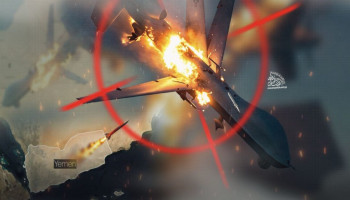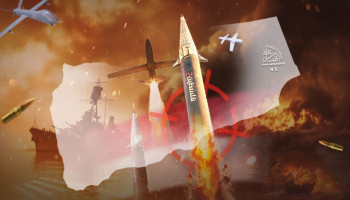A report published by the American magazine “The Credle” has highlighted the rapid development of Yemen’s military capabilities, positioning the country as a pivotal player not only on a regional level but also globally.
The magazine noted that Yemen’s blockade on the Zionist entity represents a significant pressure point against the Zionist entity and its Western allies, who have failed to protect their interests in the Red Sea or counter Sana’a’s ban on ships entering the ports of the occupying state.
Yemen has demonstrated impressive long-range military capabilities and strategic planning that has confounded the world’s greatest naval powers. Sana’a’s massive maneuvers in the maritime regions of West Asia have propelled it to the forefront of the Axis of Resistance in the region, considering it the most capable of influencing global maritime security and regional stability.
The report added that while the United States and its allies are gathering around the recently constructed “aid pier” on the Mediterranean coast in Gaza, many believe in enhancing the area as a future site for American military operations and protecting Israeli oil and gas platforms, Yemen emerges as a frontline.
In support of Gaza, Yemeni forces carried out their first direct operation against the Zionist entity on October 18, 2023. The operation included cruise missiles and drones targeting the port of “Um Al Rashrash” in occupied southern Palestine. Then, the Yemeni armed forces began targeting Israel-linked cargo ships heading to the Red Sea, effectively preventing their passage through the Bab al-Mandab Strait.
The magazine mentioned that this was the first phase in Yemen of a series of precisely planned maritime operations. The second phase witnessed a broader ban, preventing ships from any country from approaching Israeli ports, and blockading the waterway, just as Yemen has endured for eight years. The scope of operations of the Yemeni armed forces expanded in the third phase to include the Indian Ocean, targeting Israeli ships sailing the much longer Cape of Good Hope route - around the African continent - to deliver goods to the occupying state.
The magazine’s report confirmed that this led to a strong and immediate reaction from the Yemeni armed forces, which expanded the scope of their targets to include American and British maritime assets, and later, expanded their theater of operations to the vast Indian Ocean.
But with the increasing Israeli threats of invasion and bombing Rafah in recent days, Sana’a announced the start of a fourth phase of escalation, a significant escalation in its military response.
The report continued that this phase will target Israeli ships or those heading to Israeli ports in the Mediterranean, and impose comprehensive sanctions on all ships linked to companies that frequent the ports of the occupying state. In addition, measures will be applied to all shipping vessels and companies that deliver goods to Israel, regardless of their destinations, effectively preventing them from reaching all operating Yemeni waterways.
According to the magazine’s report, the announcement of the fourth round of escalation is a clear signal to expand the conflict zone to include the Mediterranean Sea and tighten the blockade on Israel, which economically depends on maritime trade. This poses a renewed challenge to the occupying entity and its allies, increasing pressure, especially on Washington and its European partners.
On the other hand, an international center specializing in maritime security pointed to the significant challenges faced by the American-British alliance in the Red Sea.
The International Maritime Security Center (CIMSEC) reported on Saturday that the Western maritime alliance in the Red Sea faces a new and difficult challenge to confront Yemeni submarine drones.
The report explained that Yemeni submarine drones pose a significant challenge to Western maritime operations primarily designed to confront surface and aerial threats, indicating that the emergence of the threat of Yemeni submarine drones necessitates a comprehensive reassessment of the maritime defense strategies and tactics used in the Red Sea.







